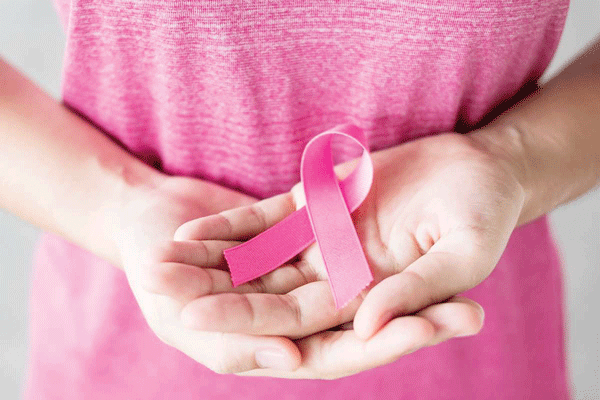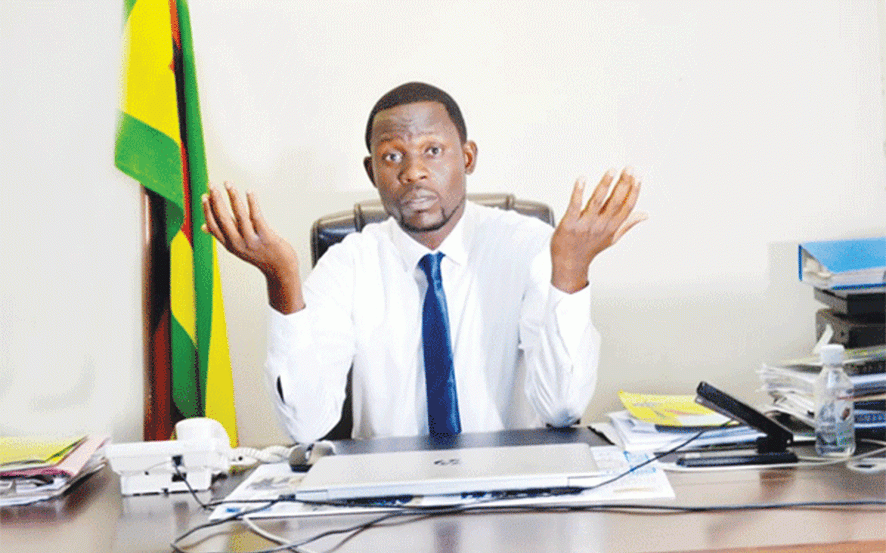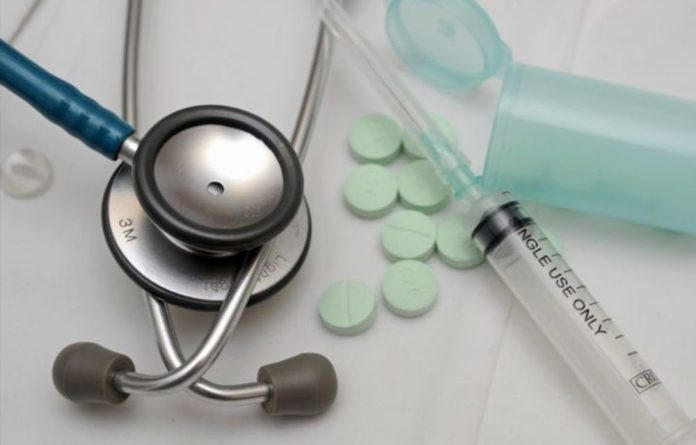
By Michelle C Madzudzo
ABOUT one in eight women are diagnosed with breast cancer during their lifetime. It is the second commonly occurring cancer in Zimbabwe. If it is detected early, treatment is more successful and there is a good chance of recovery. Early detection remains the primary way to prevent the development of life-threatening breast cancer. The earlier you get a diagnosis and treatment, the higher your chances of survival. Breast cancer does not wait, neither should you. Screening is our best bet to beat breast cancer.
What is screening ?
Screening refers to testing otherwise healthy women for breast cancer in an attempt to achieve early diagnosis. Simply put, it is checking a woman’s breasts for cancer before there are signs and symptoms of the disease.
How is it performed?
Physical breast self-examination helps women to become familiar with the regular look and feel of their breasts and more readily identify symptoms such as lumps and pain. In Zimbabwe, breast self-examinations are encouraged as most lumps are discovered by women themselves. When they are found early and are still small, they can be removed without having to remove the entire breast. Ladies, you should report any changes found during a breast self-examination to your doctor. Early detection and treatment saves lives. In our practice as radiation therapists who are into cancer awareness, we have encountered a lot of women who have heard about breast self-examination but don’t know how it should be done.
Breasts self-examination involves the woman looking at and feeling each breast for possible lumps, distortions and swelling. This increases breast awareness as women become familiar with the appearance of their breasts.
It is usually done three to five days after one’s period when breasts are less likely to be tender and swollen. Women after menopause should set a particular day of the month to do the test. It should be done from 18 years and above while looking in the mirror, standing up in the shower or lying on the bed.
- Chamisa under fire over US$120K donation
- Mavhunga puts DeMbare into Chibuku quarterfinals
- Pension funds bet on Cabora Bassa oilfields
- Councils defy govt fire tender directive
Keep Reading
What to look for
On the breast itself:
Dimpling or puckering of skin
Enlarged veins
Lump or thickening which can be painless
Persistent breast pain, though unusual
On the nipple:
Discharge or blood
Rash on or around the nipple
An inverted nipple
Change in position of nipple
Lump or thickening beneath nipple
On the arm:
Swelling of upper arm
Swelling or lump in armpit
If you notice any of these, consult your doctor or visit your nearest clinic or health facility.
Clinical breast exam
This is done by a skilled health professional such as a nurse or a doctor who uses his or her hands to feel for lumps or other changes. This can be done once a year.
Mammography
This is an X-ray machine that exposes the breast to small amounts of radiation to obtain pictures of the inside of the breast. Mammograms are the best way to detect breast cancer early, when it is easier to treat and before it is big enough to feel or cause symptoms. Having regular mammograms can lower the risk of dying from breast cancer. At this time, a mammogram is the best way to find breast cancer for most women. There is strong evidence that mammography screening results in the reduction of breast cancer deaths, principally through reducing the incidence of advanced and inoperable breast cancer. There really is need for mammography services to be readily available, affordable and accessible throughout the country if we are to reduce mortality from breast cancer.
Magnetic resonance ultrasound
This is an examination where a powerful magnetic field, radiofrequency pulses and a computer are used to obtain a detailed picture of breast tissue. This method is typically used for women at high-risk for breast cancer because of a strong family history of breast cancer. MRI is also very helpful in finding abnormalities that are not visible with mammography or ultrasound.
Ultrasound
This is an imaging that uses sound waves to create pictures of the inside of the breast, it determines whether a lump is a solid mass or just a fluid-filled cyst.
It is used on women at high risk and unable to do mammography, or pregnant women and also on women with dense breast tissue which makes it difficult to find cancer with the traditional mammography.
Is there a breast cancer screening programme in Zimbabwe?
At the moment no national breast cancer screening programme is in place but women are encouraged to go for screening. In future, a screening programme will be established for the country with our own national screening guidelines that Zimbabawean women can follow.
ABOUT one in eight women are diagnosed with breast cancer during their lifetime. It is the second commonly occurring cancer in Zimbabwe. If it is detected early, treatment is more successful and there is a good chance of recovery. Early detection remains the primary way to prevent the development of life-threatening breast cancer. The earlier you get a diagnosis and treatment, the higher your chances of survival. Breast cancer does not wait, neither should you. Screening is our best bet to beat breast cancer.
What is screening ?
Screening refers to testing otherwise healthy women for breast cancer in an attempt to achieve early diagnosis. Simply put, it is checking a woman’s breasts for cancer before there are signs and symptoms of the disease.
How is it performed?
Physical breast self-examination helps women to become familiar with the regular look and feel of their breasts and more readily identify symptoms such as lumps and pain. In Zimbabwe, breast self-examinations are encouraged as most lumps are discovered by women themselves. When they are found early and are still small, they can be removed without having to remove the entire breast. Ladies, you should report any changes found during a breast self-examination to your doctor. Early detection and treatment saves lives. In our practice as radiation therapists who are into cancer awareness, we have encountered a lot of women who have heard about breast self-examination but don’t know how it should be done.
Breasts self-examination involves the woman looking at and feeling each breast for possible lumps, distortions and swelling. This increases breast awareness as women become familiar with the appearance of their breasts.
It is usually done three to five days after one’s period when breasts are less likely to be tender and swollen. Women after menopause should set a particular day of the month to do the test. It should be done from 18 years and above while looking in the mirror, standing up in the shower or lying on the bed.
What to look for
On the breast itself:
Dimpling or puckering of skin
Enlarged veins
Lump or thickening which can be painless
Persistent breast pain, though unusual
On the nipple:
Discharge or blood
Rash on or around the nipple
An inverted nipple
Change in position of nipple
Lump or thickening beneath nipple
On the arm:
Swelling of upper arm
Swelling or lump in armpit
If you notice any of these, consult your doctor or visit your nearest clinic or health facility.
Clinical breast exam
This is done by a skilled health professional such as a nurse or a doctor who uses his or her hands to feel for lumps or other changes. This can be done once a year.
Mammography
This is an X-ray machine that exposes the breast to small amounts of radiation to obtain pictures of the inside of the breast. Mammograms are the best way to detect breast cancer early, when it is easier to treat and before it is big enough to feel or cause symptoms. Having regular mammograms can lower the risk of dying from breast cancer. At this time, a mammogram is the best way to find breast cancer for most women. There is strong evidence that mammography screening results in the reduction of breast cancer deaths, principally through reducing the incidence of advanced and inoperable breast cancer. There really is need for mammography services to be readily available, affordable and accessible throughout the country if we are to reduce mortality from breast cancer.
Magnetic resonance ultrasound
This is an examination where a powerful magnetic field, radiofrequency pulses and a computer are used to obtain a detailed picture of breast tissue. This method is typically used for women at high-risk for breast cancer because of a strong family history of breast cancer. MRI is also very helpful in finding abnormalities that are not visible with mammography or ultrasound.
Ultrasound
This is an imaging that uses sound waves to create pictures of the inside of the breast, it determines whether a lump is a solid mass or just a fluid-filled cyst.
It is used on women at high risk and unable to do mammography, or pregnant women and also on women with dense breast tissue which makes it difficult to find cancer with the traditional mammography.
Is there a breast cancer screening programme in Zimbabwe?
At the moment no national breast cancer screening programme is in place but women are encouraged to go for screening. In future, a screening programme will be established for the country with our own national screening guidelines that Zimbabawean women can follow.
Other countries in the southern African region have recommendations based on American guidelines. In the United States, women are now recommended to start annual screening with mammograms at age 45 to 54. Women aged 40 to 45 can choose to begin getting mammograms yearly if they want to. The World Health Organisation recommends biannual screening in large national-based screening programmes.
Breast cancer screening is important because it can help diagnose breast cancer early, when it is easier to treat. Each and everyone of us has a role to play in the fight against breast cancer this October and beyond.
- Michele C Madzudzo is a radiation therapist and Talk Cancer Zim founder and president











